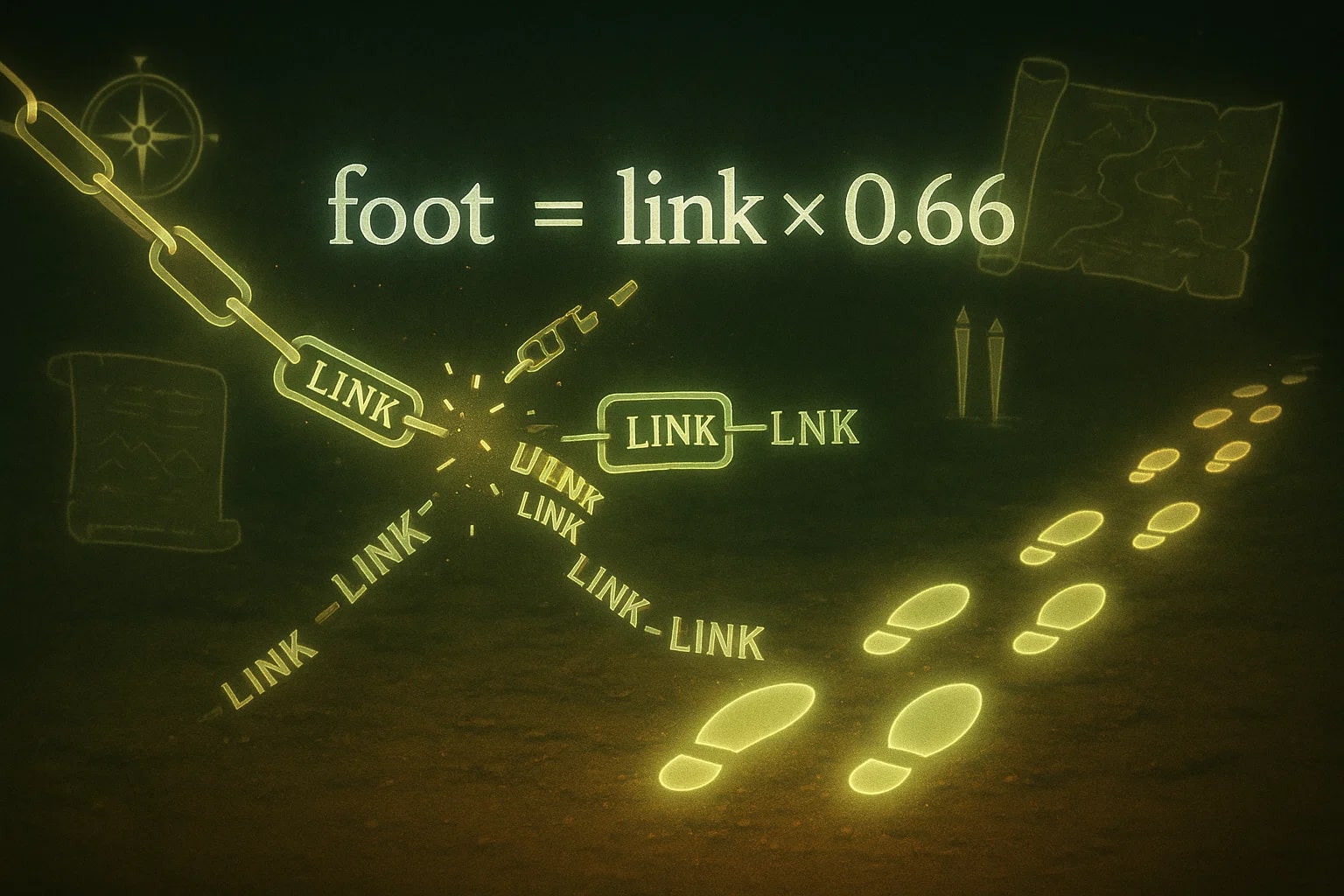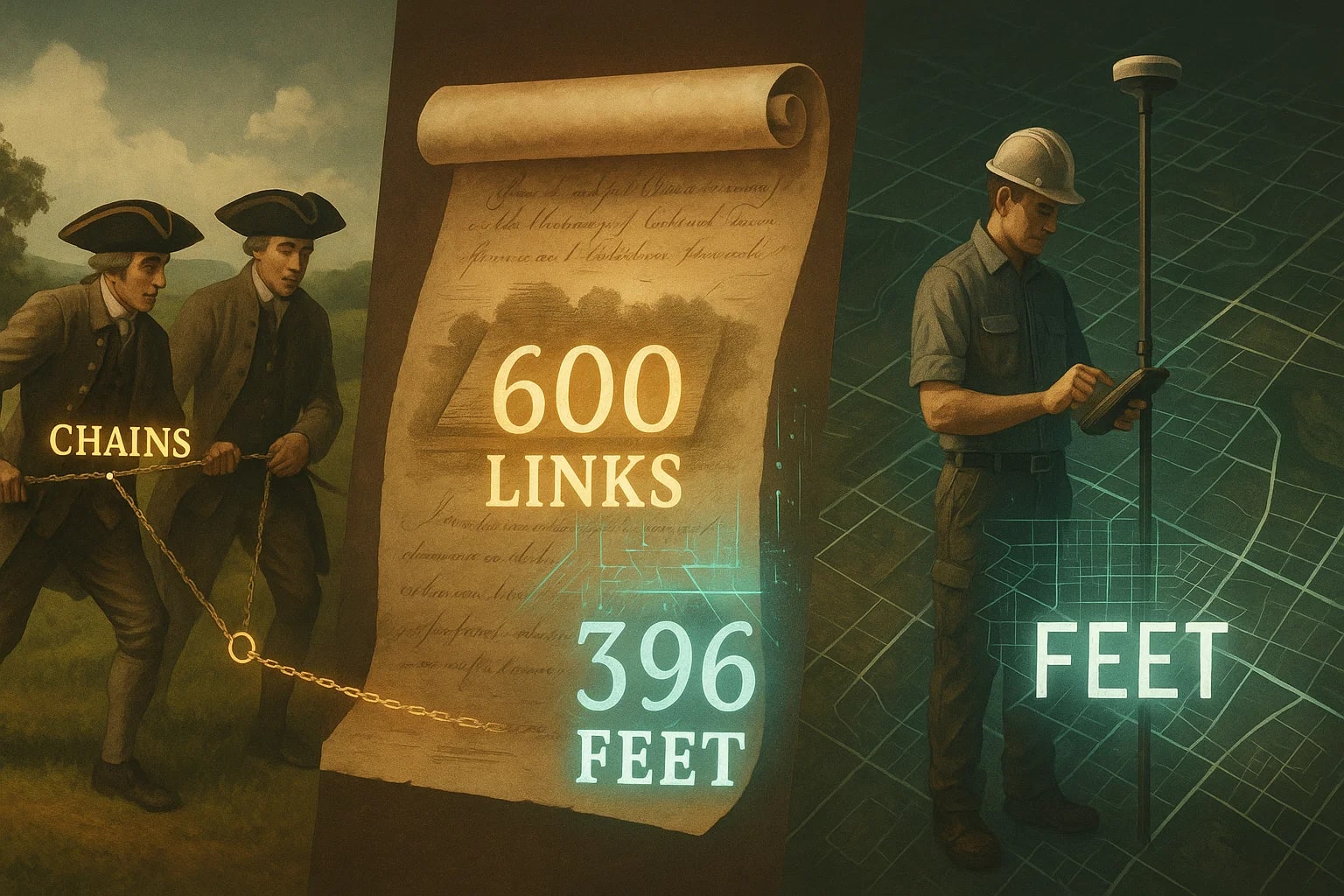link to foot – How to convert li to ft
Converting from link to foot ties together traditional surveying with modern measurement. The link, once central to land division, is a subdivision of Gunter’s chain, while the foot remains a widely used imperial unit for construction and property boundaries. Learning how to convert li to ft helps interpret old survey documents and adapt them to today’s systems.

What is a Link (li)?
A link is a surveying unit equal to 0.66 feet or 7.92 inches. There are 100 links in one chain, and 80 chains in one mile. The unit was introduced by Edmund Gunter in the 17th century as part of his measuring system.
What is a Foot (ft)?
The foot is an imperial unit equal to 12 inches or 0.3048 meters. It is still widely used in construction, property measurement, and everyday life.
How to Convert li to ft
The formula is:
foot = link × 0.66
For example, let’s convert 50 li into feet:
foot = 50 × 0.66 = 33 ft
So, 50 links = 33 feet.
For additional conversions, you can use the Length Converter or explore more options in the Conversion Tools.
Do you know?
-
The link was invented by Edmund Gunter in 1620 and became part of the “Gunter’s chain” surveying system.
-
There are exactly 100 links in one chain, making calculations easier for surveyors.
-
The foot, used since ancient times, was standardized internationally in 1959 at exactly 0.3048 meters.
-
Many early American property deeds and maps used links and chains, requiring modern conversions into feet or meters.
Surveying Across Centuries
In the 18th and 19th centuries, much of North America was surveyed using Gunter’s chain and its subdivisions, the link. Land parcels were described in terms of links and chains, which matched the practical tools carried by surveyors.
Today, surveyors and historians often need to convert those historical records into feet. For example, a boundary described as 600 links would be 396 feet. Without such conversions, interpreting these records accurately would be difficult.

Keeping History Measurable
The conversion from link to foot keeps historical surveying units relevant today. While links have largely disappeared from modern practice, feet remain in daily use.
By applying this simple formula, you can translate centuries-old survey data into modern measurements, ensuring continuity between the past and present.

